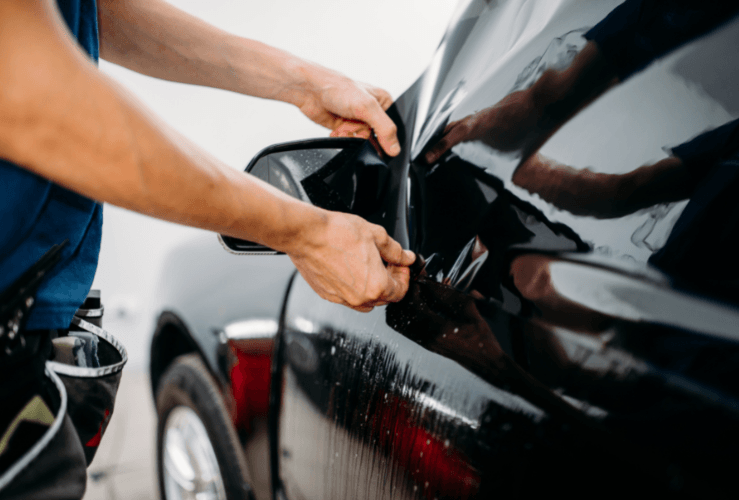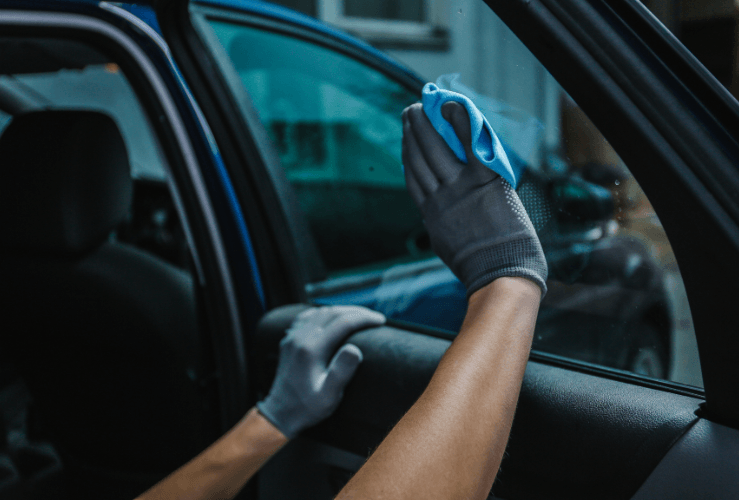Car owners have their windows tinted for a variety of reasons, including blocking UV light, improved interior cooling, reduced glare, and privacy.
Car window tint: Rules on vehicles first used on 1 April 1985
A vehicle's front side windows can be tinted to allow a minimum of 70% of the light in, while a windscreen must let in at least 75% of light.
Car window tint: Rules on vehicles first used BEFORE 1 April 1985
Both front windscreen and front side windows must allow in at least 70% of light.

Legal car window tint: Why are there limits?
When it comes to tinted windows on a car, specific limits exist for reasons of road safety: a heavily tinted window will be more difficult to see out of, and so may increase the likelihood of a collision.
In low light conditions - such as dawn and dusk - it is more difficult for a driver to see the road and any potential hazards.
A car with tinted windows in poor light would seriously impair visibility of the road for the driver.
How do I know the percentage of tinting?
Cars sold in the UK cannot have side front windows with tinting over 70%, or windscreen tinting at over 75% - so you know any new car is completely legal.
However, the percentage varies.
The degree to which a window has been tinted can be tested with a special light sensor.
This works by placing sensors on either side of the window. The amount of light passing between the sensors is then measured.
What happens if the DVLA finds your windows are wrongly tinted?
If your windscreen or front side windows are found to be wrongly tinted - i.e. over the threshold - you could receive:
- A 'prohibition notice' - meaning you are not permitted to use the vehicle until the window tints have been removed.
- A penalty notice or court summons.
The police or Driver and Vehicle Standards Agency (DVSA) vehicle examiners can carry out this test.
Can I tint the rear windscreen or rear side windows?
There is no legislation impacting the tinting of rear windscreen and rear side windows. These can be up to 100% tint if desired.
However, it's wise to ensure you can see out of these windows for safety reasons.
By following these guidelines and understanding the rules, you can safely and legally add a touch of style and function to your car with window tints.
Tinting companies and the law
It is illegal for any tinting firm to apply tints to windows that break the law.
Do you need UV protection?
Some vehicles already have laminated windscreens and/or side windows that include UV protection, so if you're thinking about buying a tint to protect your skin, your vehicle may already have sufficient protection built-in.
NB: It's possible to buy UV window tints that do not alter the amount of light entering the vehicle - so they are optically clear.
How much does professional window tinting cost?
Depending on the make and model of your car, and how many windows are being tinted, it costs between 100 and 400 to tint a car's windows.

Can I tint my own windows?
Yes, DIY tinting kits are available to buy. These include pre-cut tints that will fit the windows of your make and model.
DIY options are of course considerably cheaper than using a professional tinting service. However, doing it yourself could be time consuming and there may be an increased chance of an ill-fitting tint - particularly if it's your first time.
DIY window tinting tips
- When cutting tint film on the exterior of the car, ensure the film backing - under which the adhesive lies - is facing you. This way, you'll ensure you don’t have the film cut the wrong way round.
- Apply soapy water to the adhesive so you can adjust the position of the tint.
- Only remove the film backing when you are ready to apply the film. The longer the adhesive is exposed to the atmosphere, the more debris and particles it will pick up. Any particles will be trapped under the film.
- Use a stainless-steel blade for cutting the film against the glass. Cheaper blades could scratch the glass.
- Hold the blade at under 30 degrees to reduce the chances of scratching the glass.
- Use a small piece of film to practice cutting before you do the real thing. Also apply soapy water to help hold the film in place. You should use soapy water again when applying the unbacked film to the glass (but obviously don’t remove the test piece backing and stick it to the glass!).
Chameleon tints
If you’re considering more unique window tints, chameleon tints are becoming increasingly popular. These tints shift in colour depending on the angle and lighting, giving cars a distinctive look. However, be cautious to adhere to window tinting laws to avoid penalties.
Frequently Asked Questions
Yes, front tints are legal, provided they allow a minimum of 70% light through the front side windows and at least 75% through the windscreen. (or 70% for cars first used before 1 April 1985).
The most common choice for car windows is around 50% tint, as it provides a good balance of visibility and privacy.
Yes, if you have illegal tints on your car, you could face the possibility of being issued with a Fixed Penalty Notice (FPN).
An FPN for illegally tinted windows often entails receiving three points on your licence and fines of between £50 - £100.
In some cases, yes. If the tinting is considered a modification, it could potentially raise your premiums. Always check with your insurance provider before making changes.
The darkest legal window tint for the front side windows is 70%, while the windscreen must allow at least 75% of light through.




